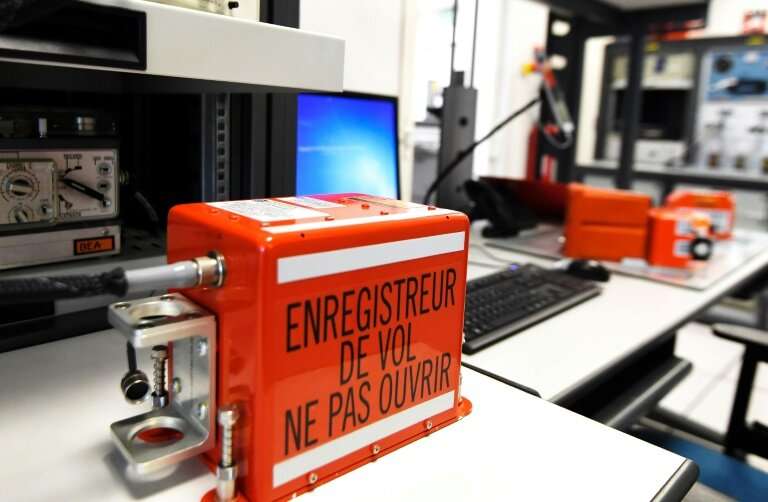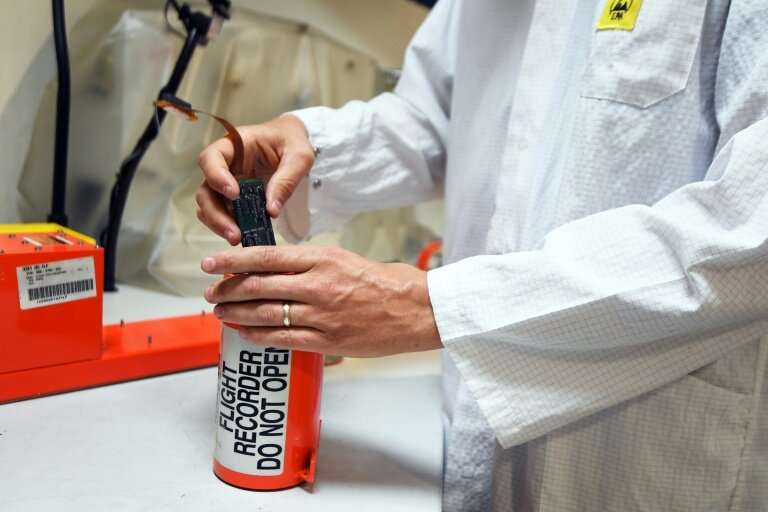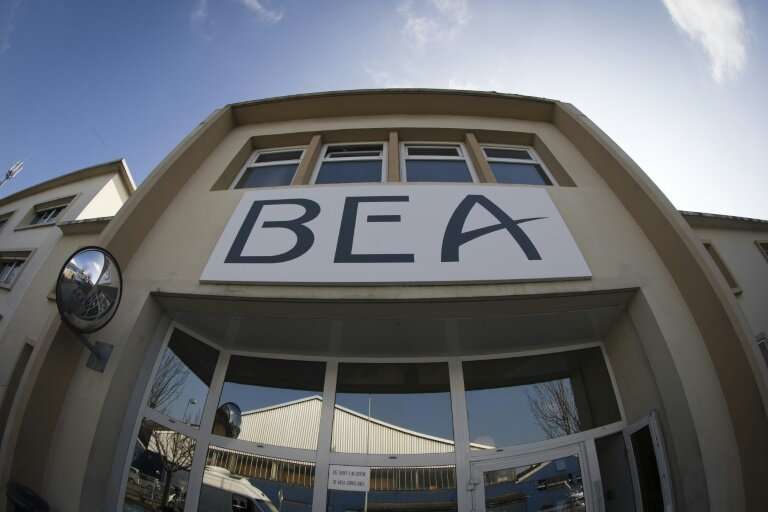Black boxes: Crucial to air crash probes

A top priority for air crash investigators is to locate and analyse a plane's two black boxes which hold vital clues to what caused it to go down, including cockpit conversations.
On Sunday, an Ethiopian Airlines Boeing 737 MAX 8 crashed, killing all 157 people on board.
The airline said Thursday that the black box flight recorders from the crashed plane had been flown to Paris for analysis by the BEA, France's aviation investigation and analysis agency.
It is uncertain how much of their content can be retrieved as both the aircraft's black boxes, found Monday, were damaged in the crash.
What are black boxes?
Introduced in the late 1950s, black boxes help explain nearly 90 percent of all crashes, according to aviation experts.
All commercial planes are required to have two of them on board—a flight data recorder and a cockpit voice recorder.
The data recorder stores up to 25 hours worth of second-by-second information including on speed, altitude, engine performance and flight trajectory.
In the case of the October Lion Air accident in Indonesia killing 189—the first of two Boeing 737 MAX 8 crashes within five months—black box analysis showed that there was a problem with the aircraft's speed when it went down.

The voice recorder picks up conversations by pilots and flight attendants and also other sounds on board, including possible alarms.
All black boxes used in civil aviation function the same way according to a common user protocol, regardless of their make, the BEA said.
It can take weeks for investigators to retrieve the data inside, and results are typically withheld from the public until the information has been thoroughly examined—which can take years.
How do they look?
The recorders are housed in boxes built to survive extreme shocks, fire and lengthy periods underwater.
Despite their name, the two boxes are in fact bright orange, with reflective stripes to make them easier for search teams to spot.
They each weigh seven to 10 kilogrammes (15 to 22 pounds) and can survive in water as deep as 6,000 metres (almost 20,000 feet) or for an hour at 1,100 degrees Celsius (2,012 degrees Fahrenheit).

To make them easier to find, they are fitted with a beacon which can emit a signal for one month.
Missing at sea
In January 2004, the black boxes of an Egyptian charter plane that crashed into the Red Sea were found after a two-week search, 1,000 metres down.
And in 2011, after 23 months submerged at a depth of 3,900 metres in the Atlantic Ocean, the intact black boxes of Air France flight AF447 were found, allowing investigators to determine what caused the 2009 crash.
Lion Air flight JT610 came down in water some 30-40 metres deep and both black boxes were found within 10 metres of each other, authorities said.
Long-haul Airbus A350 and A380 passenger jets will soon come equipped with ejectable black boxes that can float, making them easier to find after accidents over water.
© 2019 AFP





















